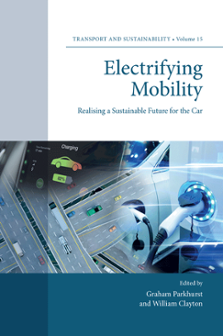
Index
Electrifying Mobility: Realising a Sustainable Future for the Car
ISBN: 978-1-83982-635-1, eISBN: 978-1-83982-634-4
ISSN: 2044-9941
Publication date: 17 October 2022
Citation
(2022), "Index", Parkhurst, G. and Clayton, W. (Ed.) Electrifying Mobility: Realising a Sustainable Future for the Car (Transport and Sustainability, Vol. 15), Emerald Publishing Limited, Leeds, pp. 247-255. https://doi.org/10.1108/S2044-994120220000015002
Publisher
:Emerald Publishing Limited
Copyright © 2022 Emerald Publishing Limited
INDEX
Note: Page numbers followed by “n” indicate notes.
- Prelims
- Part 1: The Political-Economic Context and Environmental Imperative
- Chapter 1: The Electrification of Automobility
- Chapter 2: Easy Street for Low-Carbon Mobility? The Political Economy of Mass Electric Car Adoption
- Chapter 3: The Energy and Emissions Case and the Lifecycle Impact of Electric Cars
- Part 2: Overcoming Inertia: From Internal Combustion Engine to Electric Car
- Chapter 4: Producing the Electric Car
- Chapter 5: Making the Market: The Transformation Pathway to Electric Car Mobility in the Netherlands
- Chapter 6: Choosing the Electric Car
- Part 3: Living with the Electric Car
- Chapter 7: The Effect of Electric Car Adoption on Travel Patterns
- Chapter 8: Becoming an Electric Car Owner – User Experience and the EV Community
- Chapter 9: Planning for Electric Car Charging: A Review of Technologies, Criteria and Methods
- Part 4: Electric Cars in the Future
- Chapter 10: Electric Cars: The Future Technological Potential
- Chapter 11: Americans’ Plans for Acquiring and Using Electric, Shared, and Self-Driving Cars
- Chapter 12: The Electric Car as a Component of Future Sustainable Mobility
- Index